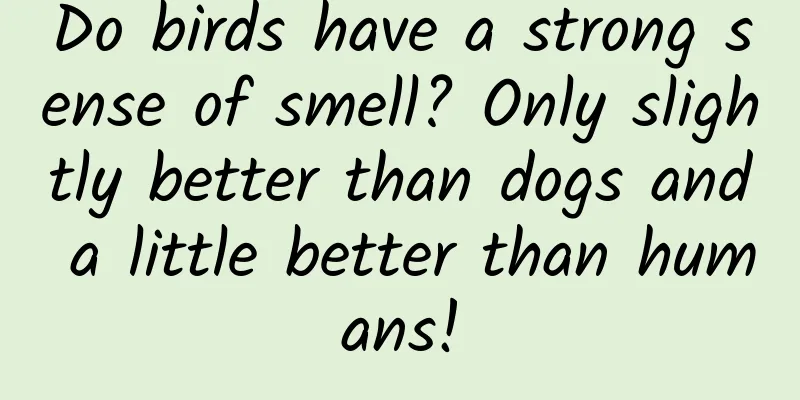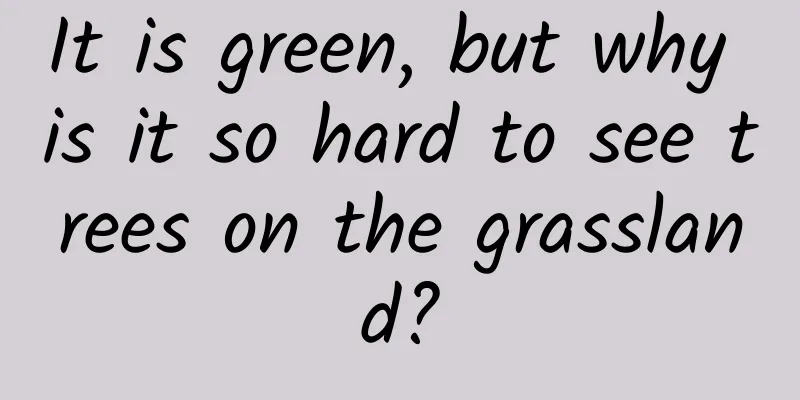Do birds have a strong sense of smell? Only slightly better than dogs and a little better than humans!

|
First, please answer two questions: Where is a bird's nose? What is it used for? The overlooked "bird nose" Almost no one thinks that bird nose is powerful, and some even think it is useless. The reason why people ignore birds' sense of smell may be that birds do not have a "real nose" like humans do - a protruding organ on the face. A bird's nose is two holes in its beak, which looks like an appendage to its mouth. A bird's nose. Image credit: birdsonline In addition, birds have excellent visual abilities, and eagles are a typical example of being able to find prey from high altitudes. This can easily lead people to mistakenly believe that birds with excellent vision do not need a keen sense of smell. In fact, birds also have olfactory bulbs in their brains (the blue part in the picture below). Different brain regions have different functions. For example, the visual cortex is responsible for processing visual information, the auditory cortex is responsible for processing auditory information, and the olfactory bulb is specifically responsible for processing olfactory information. In addition, the size of a bird's olfactory bulb is not small compared to its brain, which indirectly shows that birds may also have a good sense of smell. The size of the olfactory bulbs of different bird species. Image credit: frontiersin Of course, this is just an inference, and whether birds have a good sense of smell still needs to be proven through research. White Stork: The smell of cut grass is our signal to eat Martin Wikelski, director of the Max Planck Institute for Animal Behavior, has spent many years observing white storks around Lake Constance. During this time, he often observed a scene: when local farmers were mowing the grass, several white storks would suddenly appear next to their tractors . White stork next to a tractor. Image source: Document 4 The storks are not there for no reason, but to look for food. When the tall grass is cut by the tractor, some small animals, such as snails, frogs and mice, lose their hiding places and are exposed to the storks' field of vision, making them easy prey for the storks. Seeing this scene, Wicksky, who studied chemistry, had an idea: Are the volatile organic compounds produced when mowing the grass captured by the white stork's sense of smell, thus attracting the white stork ? When mowing the lawn, the injured parts of the plants will release green leaf volatiles (GLVs). GLVs contain a variety of aldehydes and alcohols with unique odors. When mixed together, they become the familiar " mowed lawn smell ". To test the idea, Wikowski's team rented a small plane and flew over the village of Berlingen on sunny days in spring and early summer, following the white storks. Make sure there is no visual obstruction during flight. Image source: Document 4 To verify that the white storks came for the smell, Wicksky's team first had to rule out the influence of the storks' vision and hearing, and prove that the storks did not come because they saw the tractor or heard the roar of the tractor. They followed the white storks at an altitude of 800-1200 meters each time to ensure that when the white storks found the mowing site, they were visually blocked by trees or terrain, that is, they could not see the mowing site. In terms of hearing, according to existing research results, the frequency range of sound that white storks can hear is in the range of 0.5-15 kHz, and within the minimum loudness range of 4 db, they can hear sounds within 600 meters. In other words, if the white storks fly to the mowing site 600 meters away, it means that they did not come here because they heard the sound of the lawn mower, but because they received other signals (in actual tests, scientists used instruments to detect the sound of the tractor at 300 meters away). The final observation results confirmed that the white stork flew here relying on its keen sense of smell. Can you smell the fragrance from 25 kilometers away? Yyds! The behavior of white storks observed in their natural state may be a bit subjective, but this process is necessary. In order to further verify that the white storks fly by smelling the cut grass, scientists conducted two more experiments. In the first experiment, we spread a truckload of freshly cut grass on a field that had been cut two weeks ago (the small animals here had already fled two weeks ago) to see if the white storks would still fly over. As a result, three white storks came over with a flutter, but after about 10 minutes they realized that they had been deceived and there was no food in the grass, so they fluttered away again. White storks looking for food on the tender grass. Image source: Earth In the second experiment, a synthetic mixture with the smell of mowed grass was spread on several patches of long grass to see if any white storks would be fooled by the smell and fly over to look for food. Not long after, nine white storks really came from a range of 0.5-1.2 kilometers, smelling the smell. The take-off position of these nine storks happened to be downwind of the place where the mixture was spread. A map showing a white stork taking off near a sprayed mixture with a grass-cutting smell. The blue area is where the water is sprayed, the green area is where the grass-cutting smell is (for comparison), and the yellow arrow is the flight direction and distance of the white stork. Image source: Document 4 None of them flew to the place where the water was sprinkled, but all flew to the place where the grass smelled. Image source: Document 4 This result was beyond many people's expectations, because most people thought that white storks find food with their eyes, but the research results show that the nose is their main organ for finding food . Not only that, the white stork's nose is very sensitive, even comparable to a "dog's nose". Under the right conditions (wind direction and type of smell), dogs can smell smells up to 20 kilometers away. During Wikowski's research on the smell of white storks, he observed white storks coming from the other side of Lake Constance after traveling 25 kilometers. 20 kilometers vs. 25 kilometers, which one is stronger is obvious at a glance . Although Wicksky's research subjects are only white storks, it is of great significance to speculate on the role of smell in other birds in foraging. Of course, in addition to white storks, he often sees raptors such as bald eagles and red kites hovering over mowed grass, "drooling." Obviously, they also "come by smell." Nowadays, to describe a keen sense of smell, "dog nose" has become "outdated", and "bird nose" is the real deal! refer to: 1.https://www.zhihu.com/question/63663744/answer/212585121 2.https://www.frontiersin.org/articles/10.3389/fnana.2015.00102/full 3.https://www.zhihu.com/question/60617582 4. https://sciences.adelaide.edu.au/news/list/2020/06/09/how-far-away-can-dogs-smell-and-hear Produced by | Produced by Science Popularization China | Supervised by Su Chengyu | China Science Popularization Expo Submitted by: Computer Network Information Center, Chinese Academy of Sciences The cover image and the images in this article are from the copyright library Reproduction of image content is not authorized |
<<: Why is it that “too much salt will make you stupid”?
>>: You are already full, why do you continue to show off desserts?
Recommend
Microsoft stops supporting the worst Windows ever. How do you evaluate Vista's historical status?
Windows Vista, this is a less well-known Windows n...
What is the situation under which people from other places stranded in Wuhan can apply for 3,000 yuan in government aid? What are the basic conditions for the subsidy?
Due to the city lockdown in Wuhan before the Spri...
Bloating, burping, bad breath... don't ignore it, your stomach is telling you
Audit expert: Wu Xinsheng Deputy Chief Physician,...
2019 Mainstream fission gameplay and future trends!
If "WeChat" and "fission" are...
Looking at user growth from the perspective of the AARRR model
User growth is a proposition that Internet produc...
15 words to explain CPC, CPM, CPA, CPS, CPL...I finally understand them all!
Many newcomers to the industry always fail to dis...
Want to ride a dragon like Dragon Queen? It's possible!
The first season of "Game of Thrones" s...
Can content generated by AI be used as you wish?
Recently, DeepSeek has gained many fans overnight...
Where is the "hometown" of bayberry? A genuine "Chinese fruit"
This summer, bayberry, a fruit produced in abunda...
9 "good" habits that you keep sticking to will push you towards aging and even death
Popularize science and spread science to the publ...
Programmer's nightmare: Are you afraid of encountering such a bug?
[[156934]] The bug is this: This bug only occurs ...
Why does eating nuts make your saliva taste like water?
Nuts are nutritious and delicious. The reason for...
Welcome to the 2015 Twitter Flight Developer Conference
The annual Twitter Developer Conference was held ...
I don't allow people who are afraid of injections to not know about nano microneedles!!
The same world, the same kind of "needle pho...
iOS 15.4 is updated again, and the unlocking function with a mask is more useful
iOS15.4 Beta2 Early this morning, Apple quickly l...









